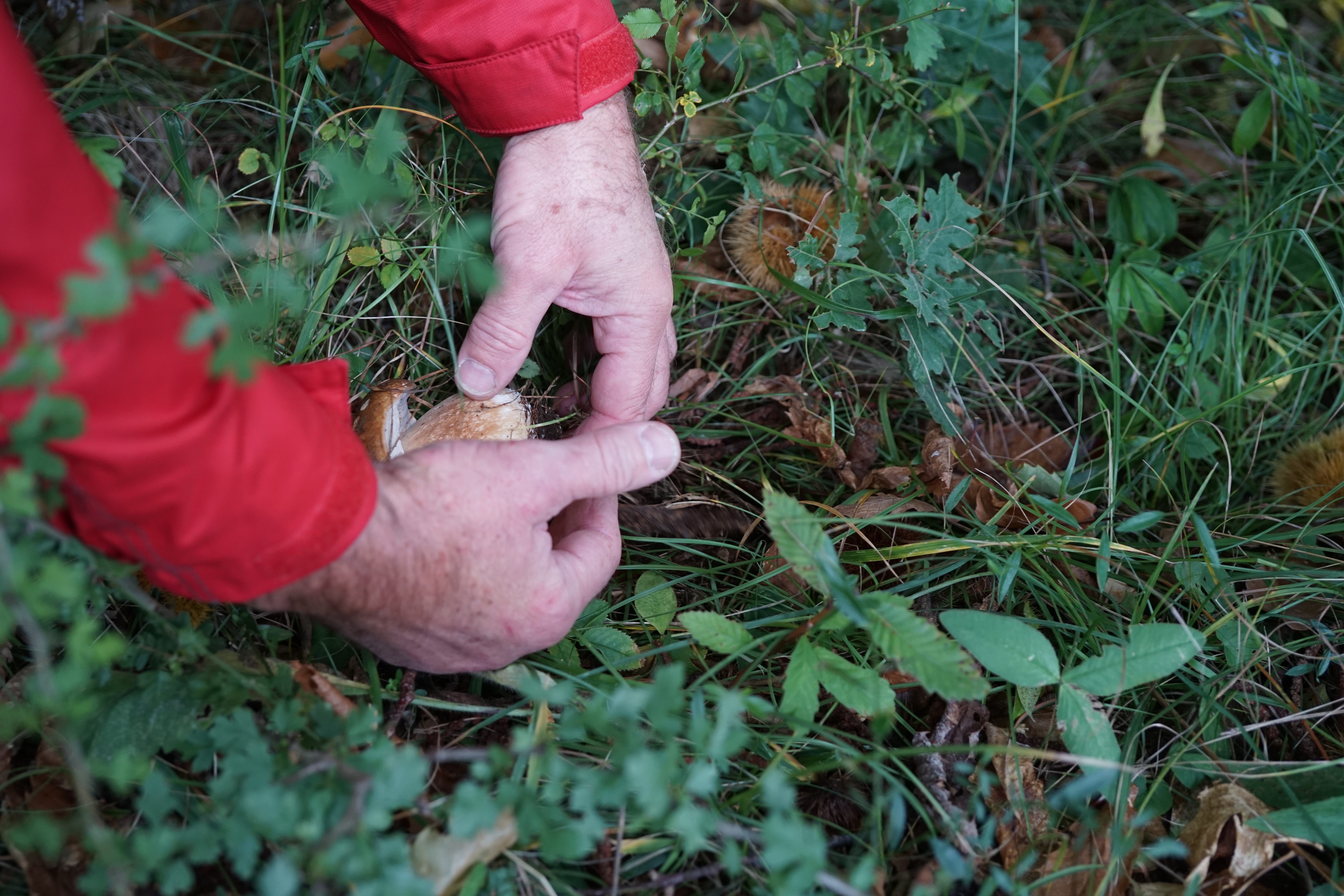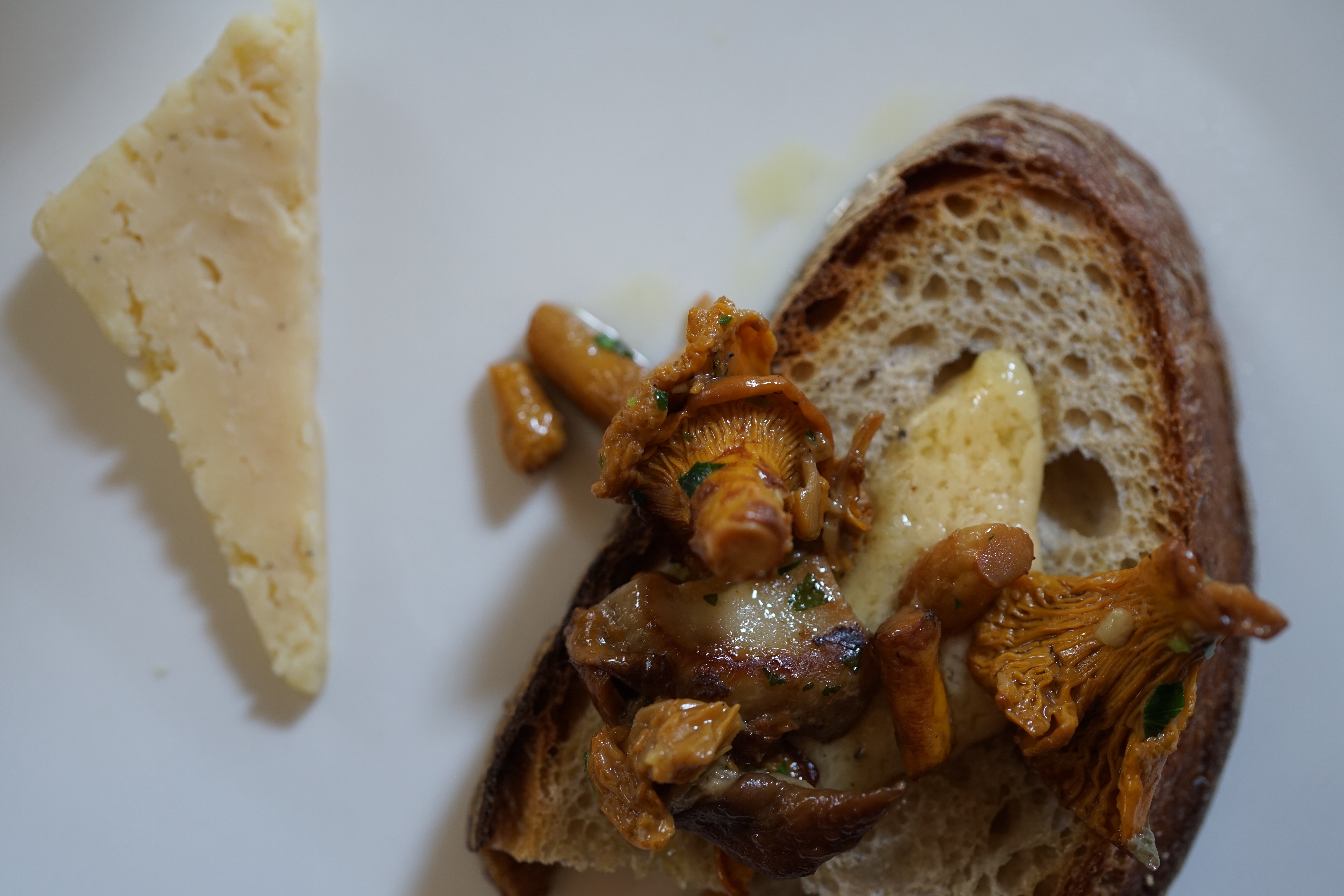Cooler temperatures and the first heavy rains both indicate that the season is ripe for one of nature’s most extraordinary living organisms. It’s a particularly great year for mushrooms in Italy, as September has been a very rainy month. Right now forests are packed, but finding mushrooms is no easy task. It sure is an exciting and even mysterious endeavour, given the context: you’re walking the forest in the early morning’s freshest air, as nature still silently wakes up. The scent of wet soil hits your nostrils as you hike for hours with all senses alert, trying to teach your eyes to only see what you’re looking for while discarding the rest, hoping for that treasure hunt finding enthusiasm to burst out at any moment.

First things first: you’ve got to wake up earlier than anyone else if you want to have a chance. Be the first on the trail. Above all, learn which mushrooms to pick: there’s not just several poisonous and even deadly ones around, there’s also a natural balance that needs to be preserved and respected.

The history – and mystery – of the relationship between human beings and mushrooms goes so far back in time that popular myths are abundant, particularly in regards to identifying edible and toxic ones. Many of these are pure nonsense, but there’s truth in some of them and they certainly have a great function in carrying on traditional knowledge and popular culture folklore. Regardless, our suggestion is to bring along someone who’s well experienced on the topic. Reading about it is fundamental, but field knowledge is key. Get to know your forest, spend hours on the prowl, learn the right spots, adapt your vision and your instinct…It might sound exaggerated but mushroom picking is an art, a hunt, an ancestral human activity that demands respect.

And there’s no possible comparison between the flavor of a farmed mushroom – champignons for example, “Agaricus bisporus Imbach” – and that of a wild, freshly picked one. The former will never reach the richness and depth in flavor of the latter. Period.
Approximately 14,000 mushroom species have been discovered to this day. Some are more sought after than other. Porcini and Ovuli (“Ceasar’s mushrooms”) are considered to be among the most delicate and delicious, kings of a wide number of recipes though often best when consumed raw with just a sprinkle of EVOO, salt and pepper, maybe a bit of parsley and some shaved Parmigiano Reggiano cheese. Some like to add a few drops of lemon juice.

But the list of delicious mushrooms is way longer and every season has it’s offerings: Spugnole, Gallinacci, Mazze di Tamburo, Laricini, Russole, Trombette…every area or region has its own paradise for mushroom lovers as well as its own names to identify the same species. And, needless to say, its own recipes. Italy is home for some 1,000 different edible mushroom varieties and each one has a specific recipe, that varies across the country.

Fried in a batter is perhaps one of the best ways to consume them, bringing out all the flavor in a crisp and comforting manner. But cooking techniques are almost limitless: raw on their own or in salads, fried, crumbed, grilled, baked, stuffed, with pasta, in a risotto, in a soup, paired with meat or seafood, “trifolati” (sautéed in a pan with garlic and parsley), grilled in vine leaves, over polenta, with gnocchi, inside a lasagna…it’s a entire world of its own, with hundreds and hundreds of dedicated recipe books!
Ultimately, it’s another perfect example of Italy’s diversity when it comes to cultural heritage, products and ways to consume them.